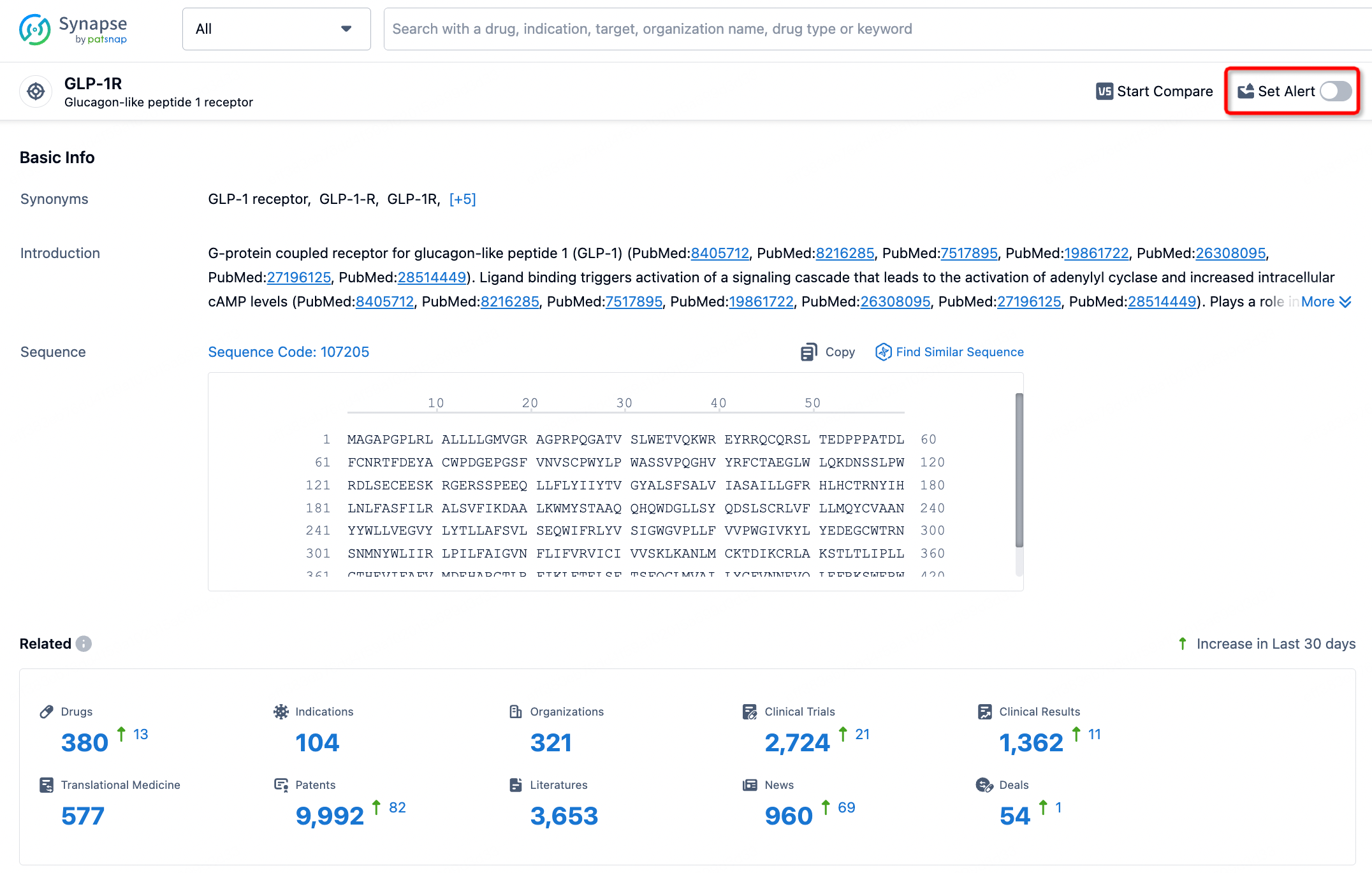Request Demo
What are ENPP3 inhibitors and how do they work?
21 June 2024
Ectonucleotide pyrophosphatase/phosphodiesterase 3 (ENPP3) is an enzyme that has been gaining significant attention in the field of medical research, particularly in the context of cancer and other diseases. ENPP3 inhibitors are a promising area of study, offering potential therapeutic benefits by targeting this specific enzyme. This article will delve into what ENPP3 inhibitors are, how they work, and what they are used for.
ENPP3 is an enzyme that plays a crucial role in the metabolism of extracellular nucleotides. It is part of the larger ENPP family, which includes several other enzymes with similar functions. ENPP3 is specifically involved in the hydrolysis of nucleotides like ATP, ADP, and AMP, converting them into pyrophosphate and the corresponding nucleotide monophosphate. These biochemical reactions are essential for various cellular processes, including signaling pathways that control cell growth, differentiation, and apoptosis.
In many cancers and other pathological conditions, ENPP3 is overexpressed, contributing to disease progression by altering the extracellular nucleotide environment. This overexpression makes ENPP3 a compelling target for therapeutic intervention. ENPP3 inhibitors are designed to block the activity of this enzyme, thereby disrupting the pathways that contribute to disease progression.
ENPP3 inhibitors work by binding to the active site of the enzyme, preventing it from catalyzing its normal biochemical reactions. This binding can occur through various mechanisms, including competitive inhibition, where the inhibitor competes with the natural substrate for the active site, or allosteric inhibition, where the inhibitor binds to a different part of the enzyme, causing a conformational change that reduces its activity. Some ENPP3 inhibitors are small molecules that can easily diffuse into cells, while others are larger biologics like monoclonal antibodies that specifically target the enzyme on the cell surface.
The inhibition of ENPP3 disrupts the balance of extracellular nucleotides, which in turn affects various signaling pathways. For example, the accumulation of ATP in the extracellular space can activate purinergic receptors, leading to altered cell signaling that can inhibit tumor growth and metastasis. Similarly, by preventing the breakdown of AMP, ENPP3 inhibitors can increase the levels of adenosine, a molecule that has anti-inflammatory and immunosuppressive effects.
ENPP3 inhibitors have shown promise in several preclinical studies, particularly in the field of oncology. By targeting ENPP3, researchers aim to develop new treatments for cancers that are resistant to traditional therapies. For example, some studies have shown that ENPP3 inhibitors can sensitize cancer cells to chemotherapy, making them more susceptible to treatment. Additionally, ENPP3 inhibitors are being investigated for their potential to enhance the efficacy of immunotherapies. By modulating the extracellular nucleotide environment, these inhibitors can improve the immune system's ability to recognize and attack cancer cells.
Beyond oncology, ENPP3 inhibitors are also being explored for their potential in treating other diseases. Inflammatory and autoimmune conditions, where the regulation of extracellular nucleotides plays a crucial role, are another area of interest. ENPP3 inhibitors could offer new therapeutic options for conditions like rheumatoid arthritis, lupus, and multiple sclerosis. Furthermore, because ENPP3 is involved in the metabolism of nucleotides that affect bone mineralization, these inhibitors may have applications in treating bone-related diseases like osteoporosis.
In conclusion, ENPP3 inhibitors represent a promising area of research with significant potential for therapeutic applications in cancer and beyond. By targeting the enzymatic activity of ENPP3, these inhibitors can disrupt critical signaling pathways, offering new avenues for treatment. While much of the research is still in the preclinical stage, the future looks promising for the development of ENPP3 inhibitors as effective therapies for a variety of diseases.
ENPP3 is an enzyme that plays a crucial role in the metabolism of extracellular nucleotides. It is part of the larger ENPP family, which includes several other enzymes with similar functions. ENPP3 is specifically involved in the hydrolysis of nucleotides like ATP, ADP, and AMP, converting them into pyrophosphate and the corresponding nucleotide monophosphate. These biochemical reactions are essential for various cellular processes, including signaling pathways that control cell growth, differentiation, and apoptosis.
In many cancers and other pathological conditions, ENPP3 is overexpressed, contributing to disease progression by altering the extracellular nucleotide environment. This overexpression makes ENPP3 a compelling target for therapeutic intervention. ENPP3 inhibitors are designed to block the activity of this enzyme, thereby disrupting the pathways that contribute to disease progression.
ENPP3 inhibitors work by binding to the active site of the enzyme, preventing it from catalyzing its normal biochemical reactions. This binding can occur through various mechanisms, including competitive inhibition, where the inhibitor competes with the natural substrate for the active site, or allosteric inhibition, where the inhibitor binds to a different part of the enzyme, causing a conformational change that reduces its activity. Some ENPP3 inhibitors are small molecules that can easily diffuse into cells, while others are larger biologics like monoclonal antibodies that specifically target the enzyme on the cell surface.
The inhibition of ENPP3 disrupts the balance of extracellular nucleotides, which in turn affects various signaling pathways. For example, the accumulation of ATP in the extracellular space can activate purinergic receptors, leading to altered cell signaling that can inhibit tumor growth and metastasis. Similarly, by preventing the breakdown of AMP, ENPP3 inhibitors can increase the levels of adenosine, a molecule that has anti-inflammatory and immunosuppressive effects.
ENPP3 inhibitors have shown promise in several preclinical studies, particularly in the field of oncology. By targeting ENPP3, researchers aim to develop new treatments for cancers that are resistant to traditional therapies. For example, some studies have shown that ENPP3 inhibitors can sensitize cancer cells to chemotherapy, making them more susceptible to treatment. Additionally, ENPP3 inhibitors are being investigated for their potential to enhance the efficacy of immunotherapies. By modulating the extracellular nucleotide environment, these inhibitors can improve the immune system's ability to recognize and attack cancer cells.
Beyond oncology, ENPP3 inhibitors are also being explored for their potential in treating other diseases. Inflammatory and autoimmune conditions, where the regulation of extracellular nucleotides plays a crucial role, are another area of interest. ENPP3 inhibitors could offer new therapeutic options for conditions like rheumatoid arthritis, lupus, and multiple sclerosis. Furthermore, because ENPP3 is involved in the metabolism of nucleotides that affect bone mineralization, these inhibitors may have applications in treating bone-related diseases like osteoporosis.
In conclusion, ENPP3 inhibitors represent a promising area of research with significant potential for therapeutic applications in cancer and beyond. By targeting the enzymatic activity of ENPP3, these inhibitors can disrupt critical signaling pathways, offering new avenues for treatment. While much of the research is still in the preclinical stage, the future looks promising for the development of ENPP3 inhibitors as effective therapies for a variety of diseases.
How to obtain the latest development progress of all targets?
In the Synapse database, you can stay updated on the latest research and development advances of all targets. This service is accessible anytime and anywhere, with updates available daily or weekly. Use the "Set Alert" function to stay informed. Click on the image below to embark on a brand new journey of drug discovery!
AI Agents Built for Biopharma Breakthroughs
Accelerate discovery. Empower decisions. Transform outcomes.
Get started for free today!
Accelerate Strategic R&D decision making with Synapse, PatSnap’s AI-powered Connected Innovation Intelligence Platform Built for Life Sciences Professionals.
Start your data trial now!
Synapse data is also accessible to external entities via APIs or data packages. Empower better decisions with the latest in pharmaceutical intelligence.


